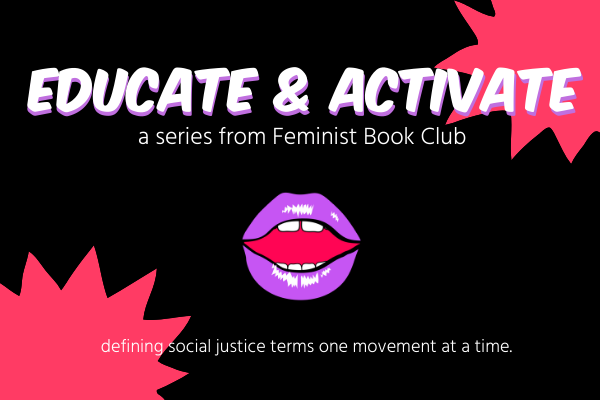Feminist Book Club blog contributors are working together to create posts as an “Educate & Activate” series. We will define a term or movement, provide historical context, and give you additional resources to learn more. We believe that an educated populace can be better activists, accomplices and co-conspirators. It is important to note that these are meant to be brief descriptions and not inclusive or exhaustive of all resources. We urge you to continue being curious, and continue learning more.
Definition
The Stonewall Riots were a movement of demonstrations that began at the Stonewall Inn in New York City on June 28, 1969. The Stonewall Riots are believed to be the the beginning of the LGBTQIA rights movement and were started by a Black transgender woman named Marsha P. Johnson.
First Usage
The first use of term, The Stonewall Riots, was in reference to the series of events that took place on June 28, 1969 when police raided the Stonewall Inn in the Greenwich neighborhood in New York City with the objective of demanding gender verification checks on the transgender women in attendance. The Stonewall Riots refer to the action that protestors took against the police at the Stonewall Inn where patrons and local sympathizers threw bottles and debris at the police.
History
The Stonewall Riots have a history that date before the riots themselves. Prior to the riots beginning on June 28, 1969, the LGBTQIA community experienced extreme social discrimination and found comfort in attending various gay bars around the city. New York City had a growing LGBTQIA population and the bars were a place of safety for members of the community. The bars that those who identified on the LGBTQIA spectrum frequented were regularly harassed by the police officers and on June 28, 1969 police raided the Stonewall Inn, the most popular gay club, due to a report that it was operating without a liquor license. Once the police entered, patrons were subjected to gender verification by the officers. Patrons were appalled and after years of discrimination and violence against the LGBTQIA community, they began to fight back by throwing bottle and debris at the police officers. Marsha P. Johnson, a Black transgender woman, was in attendance that night and is credited as the leader of the riots. Marsha P. Johnson was the leader of the LGBTQIA movement that followed the Stonewall Riots and was an outspoken advocate and founding member of various gay and transgender organizations in the following years. The Stonewall Riots represent the first time that lesbian, gay, and transgender people united behind a common cause and in the following days after the Stonewall Riots, there were various demonstrations to show solidarity for the fight for civil rights. Today, June marks the month long celebration of LGBTQIA Pride as a remembrance of the Stonewall Riots which were a catalyst for various civil rights organizations to establish and work towards equal rights.
Resources For Further Education
To learn more about the Stonewall Riots consider looking into the following resources:
- The Stonewall Riots: Coming Out in the Streets by Gayle E. Pitman
- Marsha P. Johnson: Transgender hero of Stonewall Riots finally gets her due
- Drunk History- Marsha P. Johnson Sparks the Stonewall Riots
- For learners young and old- Stonewall: A Building. An Uprising. A Revolution written by Rob Sanders and illustrated by Jamey Christoph


Pingback: Educate & Activate Series: Queer | Feminist Book Club